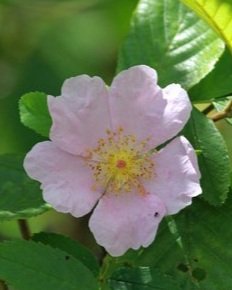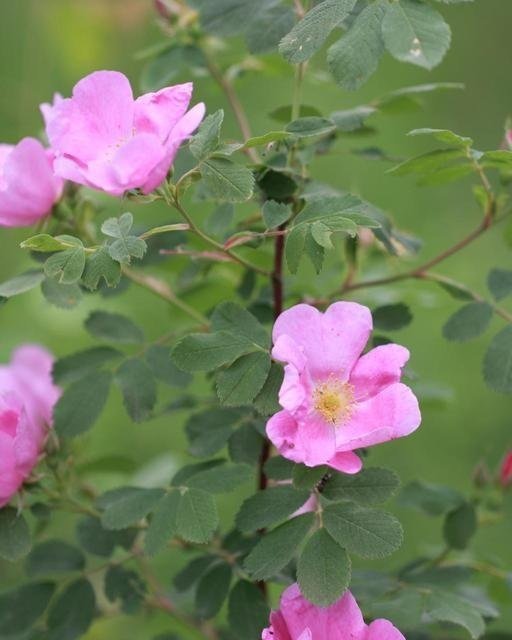Grow Me Instead: Invasive Roses
While many non-native plant species are non-threatening to our native biodiversity (like tomato plants), some can become invasive and negatively impact local natural areas, the economy, and/or human health. Over the next month, we’re going to share native or non-invasive alternatives to common garden plants with invasive tendencies.
As part of our Grow Me Instead series, today we are featuring two species of roses – Multiflora Rose (Rosa multiflora) and Rugosa Rose (Rosa rugosa)!
Multiflora Rose (Rosa multiflora)
Plant Description
Native to eastern Asia (Korea, Taiwan, Japan and parts of China)
Introduced to North America as an ornamental plant in the mid-1800s
Thorny, multi-stemmed, perennial shrub or climbing vine with arching stems; 5 to 12 feet tall
The leaves are pinnately divided into five to eleven elliptical, sharply toothed leaflets, each up to one inch long.
Resembles other roses and bramble species but distinguished by fringed stipules, upright arching stems, and the clusters of numerous small leathery rose hips that persist over winter.
Its white flowers grow in clusters.
It can climb ten feet or more into the lower branches of trees.
Problem
Tolerates a wide range of soil, moisture, and light conditions. It can invade fields, forests, stream banks, wetlands, etc.
Dense thickets exclude other vegetation from establishing and may affect nesting of some native birds, as well as exclude livestock and reduce their forage areas
Spread by bird droppings. The germination of the seeds is enhanced by digestive tract of birds.
Can form new plants by arching canes touching ground to form new roots (like blackberries)
An average plant can produce half a million to a million seeds per year. Seeds can remain viable in the soil for ten to twenty years
Rugosa Rose (Rosa rugosa)
Plant Description
Native to eastern Asia astern Asia, in northeastern China, Japan, Korea and southeastern Siberia
Introduced to America from Japan as an ornamental plant in the mid-1800s
Perennial, deciduous shrub, up to seven feet tall (3-7ft).
Flowers range from white to dark pink, 2 inches across
Rose hips are about 1 inch in diameter
Leaves are heavily veined and wrinkled (“rugose”), toothed, and dark green. They are pinnately compound, with 5-9 oval leaflets
Stem is woody and covered densely in straight prickles.
Problem
Can be planted in many areas, but invades beach dune and coastal habitats as it is tolerant of salt spray and poor soils.
Seeds possibly dispersed by tides, occasionally by bird droppings.
Rhizomes can float and be spread to new locations.
Creates dense thickets pushing out other vegetation
Native or Non-Invasive Alternatives
Luckily, there are plenty of roses native to North America! Consider planting these species instead:
Smooth Rose (Rosa blanda)
Swamp Rose (Rosa palustris)
Virginia Rose (Rosa virginiana)
Carolina Rose (Rosa carolina)




